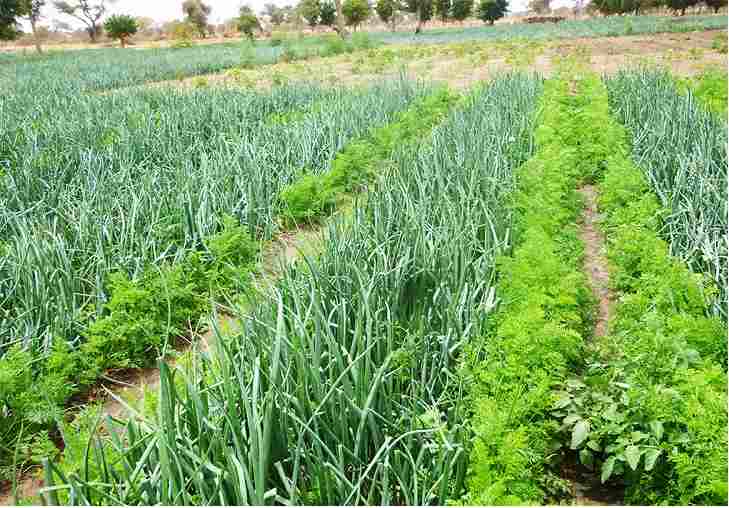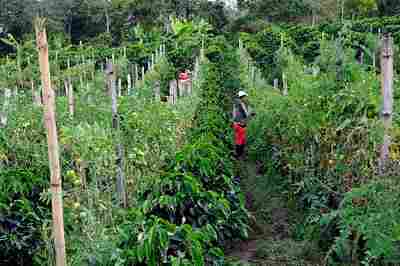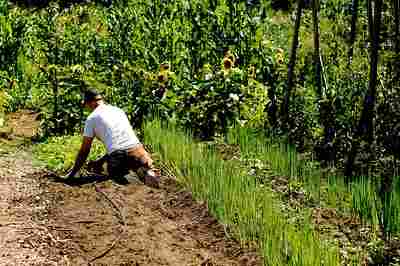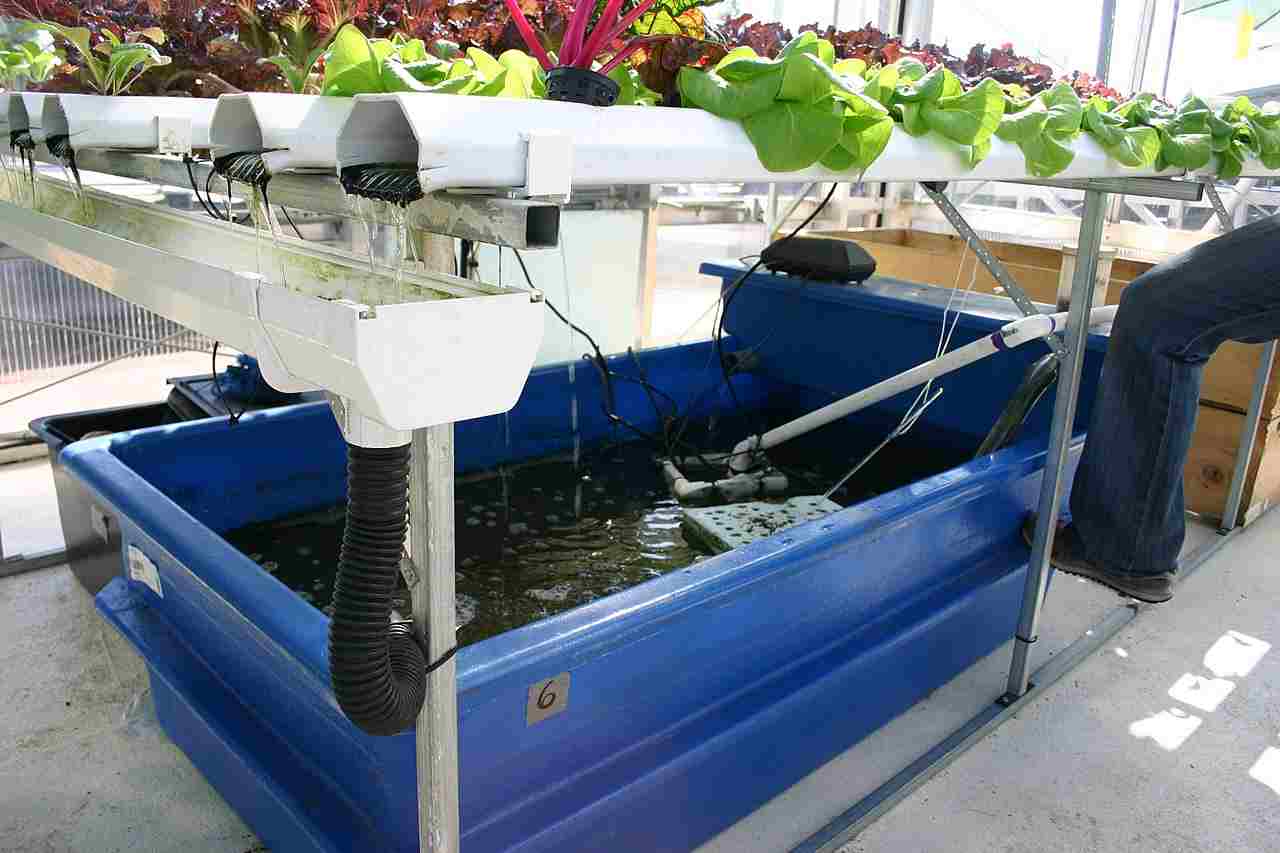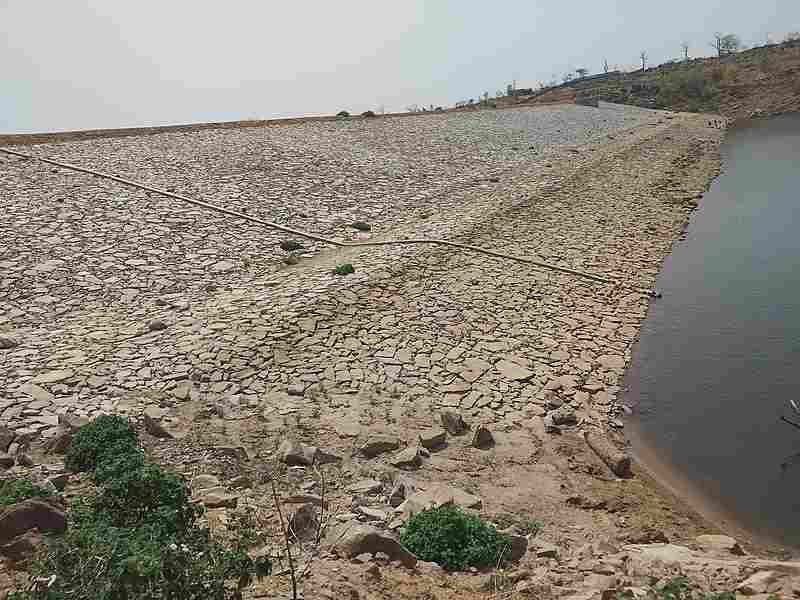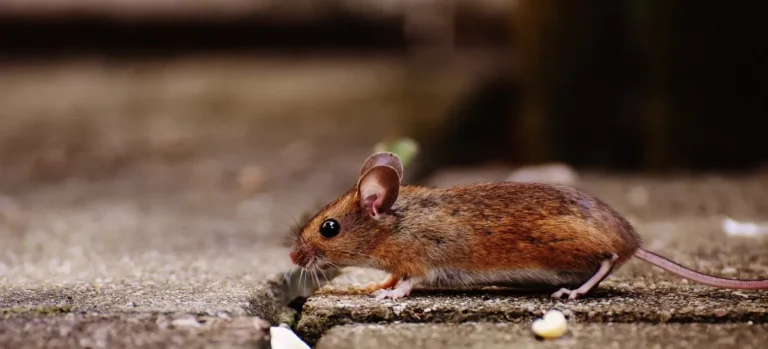7+ Advantages of Intercropping and Their Mechanisms Discussed
Advantages of intercropping are; increased crop yield, organic pest control, soil conservation and optimization, space efficiency, reduced disease incidence, low water requirement, reduced fertilizer demand, and compatibility with other sustainable practices.
This article discusses the advantages of intercropping, as follows;
1). Increased Crop Yield: One of the Advantages of Intercropping
Intercropping is an agricultural practice that offers multiple advantages, and one of the most significant benefits is the potential for increased crop yield. This makes intercropping a valuable and beneficial practice for farmers. Here we discuss how increased crop yield makes intercropping advantageous.
Yield Prospects of Intercropping and Their Implications
Among sustainable farming practices, intercropping has high yield prospects due to factors like; complementary effects, resource use efficiency, yield stability, reduced fertilizer usage, biodiversity enhancement, resilience and long-term sustainability.
Intercropping usually enables farmers to achieve higher crop yields than what would be expected based on the sole crop yields of the constituent species. When two or more crop species are cultivated together in the same field, they often have complementary growth trends, nutrient requirements, or pest resistance, which can lead to mutualistic effects and increased yields for all crops involved.
The productive performance of intercropping relies on the complementary effects that are established between the intercropped species. When compatible species are planted together, they can interact synergistically, thereby enhancing each other's growth and yield potential. This complementary effect has a significant contribution to higher crop yields.
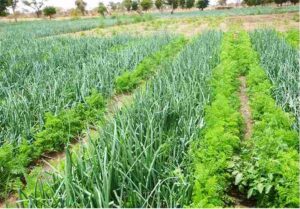
Intercropping often increases resource use efficiency on farms. Some species may utilize resources such as water, solar energy, and nutrients more effectively when intercropped. This improved resource utilization contributes to greater yields for all involved crops, and reduces the risk of resource depletion even in nutrient-limited environments.
In several cases, intercropping tends to enhance the stability of crop yields, especially on a long-term basis. When pests or adverse weather conditions affect one crop, the other may remain unaffected or experience minimal damage. This helps reduce the risk of complete crop failure and ensures a stable food supply. It is therefore a viable strategy for combating food insecurity challenges and climate change impacts.
It is known that intercropping can reduce the need for fertilizers. When practiced, it often has similar effects to organic farming and permaculture, so that farmers can achieve higher yields while utilizing fewer chemical fertilizers, which not only reduces production costs but also benefits the ecosystem by minimizing agricultural-chemical runoff and environmental pollution.
Intercropping is not just a short-term solution; rather, it offers long-term benefits. As farmers continue to practice intercropping, yield benefits often increase over time. This sustained improvement in crop yields is very helpful for addressing the growing demand for food production, especially within a linear economic framework.
With the global population increasing and agricultural productivity becoming a priority, intercropping is a sustainable farming approach that can contribute to increased crop production, thereby satisfying societal needs for food, feed, and fiber.
Intercropping enhances biodiversity and resilience in agricultural systems. By growing different crop species together, farmers promote a more diverse and robust ecosystem, which can better withstand adverse environmental issues and continuous changes in biotic and abiotic conditions.
Additional Notes and Reiterations on the Productivity of Intercropping
Generally, the increased crop yield associated with intercropping makes it a valuable agricultural practice.
This method not only helps farmers achieve higher production but also contributes to sustainable and resilient agriculture, meeting the demands of a growing world population.
The specific yield advantage of intercropping can vary depending on the crop combinations, local conditions, and farmer practices. However, research indicates that intercropping can increase yields by 16-29% or more in various scenarios, while reducing the need for fertilizers.
This suggests that intercropping is a promising strategy for boosting agricultural productivity and food security.
2). Organic Pest Control
A notable advantage of intercropping is its role as an organic pest control strategy. Intercropping can be a highly effective practice for managing and reducing pest infestations in agricultural systems.
This section addresses how organic pest control through intercropping makes the practice beneficial.
Mechanisms and Benefits of Pest Control in Intercropping
Intercropping controls pests through diversification of crops, repellent and masking effects, and enhancement of 'natural enemies.'
Commonly, intercropping diversifies the types of crops that are grown within a single agro-ecosystem. This diversity disrupts the visual and olfactory cues that pests use to locate their host plants on monoculture farms. By planting different crops together, pests may struggle to locate and attack specific crops, reducing pest infestation and crop damage.
Also, intercropping can create a situation where one crop, referred to as a repellent intercrop, masks the production crop from insect pests. This masking effect deters pests from reaching their preferred host crop, and ultimately protects the main crop. The strategy leverages the concept of plant repellency to pests.
By enhancing species richness and diversity, intercropping fosters greater activity of natural enemies of pests in the agro-ecosystem. The presence of multiple crop species provides food and shelter for these beneficial insects and other organisms (like plants, microbes, birds, amphibians, and some reptiles) that prey on or parasitize pests. Natural enemies, such as parasitoids and predators, help to effectively control insect pest populations.
Intercrops can enhance conservation biological control, which involves creating conditions that attract and sustain natural enemies of pests. These intercropped systems provide both food and shelter to beneficial organisms, further promoting the control of pest populations.
Research findings suggest that intercropping can be especially effective in controlling specific pest species. For example, it has been identified as an efficient control method for certain arthropod pests, particularly at high pest population densities.
Discussions so far imply that organic pest control through intercropping can significantly reduce the need for chemical pesticides. This has several benefits, including lower production costs, reduced chemical pollution, and less harm to non-target organisms and the environment.
Intercropping aligns with the principles of sustainable pest management. Instead of relying on single-crop monoculture systems that can become vulnerable to pests, intercropping can be adopted as a viable alternative which promotes long-term sustainability by reducing the risks associated with pest infestations.
Intercropping has been recognized as an effective pest management tool used worldwide. Its applicability extends across various crops and regions, making it a versatile strategy for farmers.
3). Soil Conservation and Optimization (One of the Advantages of Intercropping)
Intercropping offers several benefits related to soil conservation and optimization, so that it can be described as a beneficial agricultural practice for both crops and soils. This section discusses how intercropping is beneficial in terms of soil effects.
Soil-Related Benefits of Intercropping
Soil-related benefits of intercropping are; improved fertility, nutrient availability and uptake, nutrient cycling, reduction of nutrient leaching, increased soil carbon and organic matter, microbial community and nutrient recycling enhancements, as well as increased efficiency of nutrient use.
The quality and fertility of the soil can be enhanced through intercropping practice. This improvement is attributed to increased enzymatic activities in the soil, which contribute to the breakdown of organic matter and the release of essential nutrients. The enrichment of soil fertility can in turn lead to improved crop growth and yield.
Intercropping can improve nutrient availability in the soil. The interaction between different crops within an intercropping system, can facilitate a more efficient use of nutrients. As a result, plants can uptake essential nutrients, such as nitrogen, potassium and phosphorus (and also utilize them), more effectively. This enhanced nutrient uptake contributes to increased crop yields.
Nutrient cycling is another process that is enhanced by intercropping systems, in the soil. Nutrients are utilized and recycled more efficiently, thereby reducing nutrient losses from the agricultural ecosystem. This not only benefits the current crops but also maintains the fertility of soil over the long term.
Intercropping can help to reduce nutrient leaching, which can be described as the loss of nutrients from the soil through erosive runoff or deep percolation. By establishing a more diverse and complex root system through the combined growth of different crops, intercropping can minimize the risk of nutrient leaching, and ensure that nutrients remain available for plant uptake.
The practice of intercropping can contribute to increased soil carbon (C) and organic matter (OM). Enhanced levels of soil carbon promote soil health and microbial activity. Greater soil organic matter content improves soil structure, moisture retention, as well as nutrient-holding capacity, all of which benefit plant growth and overall productivity.
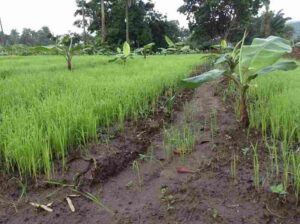
The nutrient content in the soil can be increased through intercropping. Studies have shown that intercropping practices can significantly improve soil nitrogen, potassium, phosphorus levels, while optimizing carbon sequestration. These nutrients are essential for crop growth, and their enhanced availability supports healthier and more productive plants.
Certain intercropping systems can change the composition and size of soil microbial communities. This transformation can be beneficial as different microbial species are instrumental in nutrient cycling, disease suppression, and overall soil improvement. A diverse soil microbiome contributes to improved growth of crops.
Intercropping systems, particularly when implemented in a strategic manner, can increase the resource-use efficiency of the soil. This includes optimizing the use of soil nutrients and water, thereby leading to more productive and sustainable agriculture.
4). Space Efficiency
Intercropping is a practice that enhances space efficiency in agriculture, and this space-saving feature makes intercropping highly beneficial. Further discussion on how space efficiency makes intercropping advantageous, is provided below.
Causative Factors and Benefits of Space-Use Efficiency in Intercropping
In addition to soil and water conservation, intercropping also saves space. Concepts that can be used to understand the space efficiency of intercropping are; maximized land utilization, optimized canopy coverage, cooler microclimate, enhanced transpiration, diverse cropping, reduced land pressure, and reduced deforestation.
Intercropping allows for the simultaneous cultivation of two or more crops on the same field. This approach maximizes land utilization and ensures that more crops are grown within a given area. It is especially valuable in situations where land availability is limited or where the cost of acquiring additional land is prohibitive.
In an intercropping system, different crops with varying canopy structures are grown together. This often results in efficient canopy coverage of the field, with crops at different heights complementing each other. The canopies of different crops fill the vertical space, and ensure that sunlight is fully utilized, which can lead to increased overall productivity.
Also, intercropping can create a cooler microclimate in the field. The combined canopy of multiple crops can provide shade and reduce temperature extremes. This can be very advantageous in regions with hot climates, where temperature regulation is critical for crop vitality and productivity.
The presence of multiple crops in close proximity within an intercropping system, usually increases transpiration rates. Transpiration is the process by which plants release water vapor into the atmosphere. It not only cools the environment but also influences local humidity levels, which can be beneficial for crop growth.
Intercropping creates avenue for the cultivation of different crops simultaneously, thereby offering greater diversity in crop production within a limited space. This diversity can have economic benefits, as different crops may have different market demands, and the variety can spread risks associated with market fluctuations.
By achieving higher crop yields per unit area, intercropping can help to alleviate land pressure. As global populations rise and agricultural land becomes scarcer, the practice of intercropping can contribute to food security by yielding more agricultural products from less land.
When intercropping is adopted as a space-efficient practice, there is less need to clear additional land for agriculture. This can contribute to forest conservation and a reduction in deforestation rates, which is helpful for conserving biodiversity and conserving environmental resources.
5). Reduced Disease Incidence: One of the Advantages of Intercropping
Intercropping offers the advantageous prospect of reducing disease incidence, and this disease control benefit makes the intercropping practice highly beneficial. Elaboration of this concept is carried out in the following subsection.
Intercropping as a Sustainable Disease Suppression Mechanism
Incidence of plant diseases in intercropping schemes is generally lower than that of monocultural schemes because of the diversity enhancing and microclimate-influencing functions of this farming approach.
Extensive research, encompassing over 200 studies, has indicated that intercropping reduces the incidence of diseases in crop fields. This reduction in disease is particularly prominent for foliar diseases caused by fungi. In fact, in 73% of these studies, intercropping resulted in lower disease incidence.
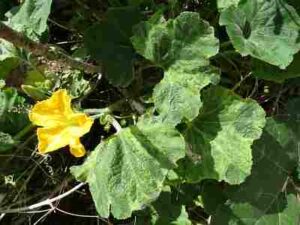
Intercropping can effectively alter the microclimate within the crop field. By combining different crop species, it creates conditions that are non-typical, and less favorable to the development and spread of pathogens. These modified microclimates often suppress the activity of disease-causing agents, including pathogens.
The presence and activity of natural disease control mechanisms, are enhanced through intercropping. The diversity of crops in an intercropped system can attract and sustain beneficial insects and other species that prey on or parasitize disease-causing organisms. This natural control of pests and diseases is an essential aspect of intercropping.
Several mechanisms are involved in the disease suppressive effect of intercropping. These mechanisms may include the disruption of cues for pathogen host location (visual or olfactory) and interference with pathogen reproduction. The presence of multiple crops can confuse or deter pests from locating their preferred host plants, resulting in lower disease incidence.
Intercropping contributes to sustainable disease management practices. It reduces the need for chemical fungicides and other disease control measures, thereby promoting eco-friendly and sustainable agricultural conditions.
The interactions between different crop species within an intercropping system can lead to the creation of microclimates that hinder the biological success of disease pathogens. These microclimates may involve altered temperature, humidity, and light conditions, which are less conducive to the development of diseases.
Additional Notes and Reiterations On Crop Disease and Sustainable Agriculture
To prevent plant diseases, several strategies can be employed, including manipulating/altering environmental conditions, removing infected plants, applying protectant pesticides; and practicing good sanitation.
1. Altering environmental conditions, such as temperature, soil pH, and humidity, can create less favorable conditions for disease development.
2. Promptly removing and disposing of infected plants can prevent the spread of diseases from such affected individuals to healthy plants.
3. The use of pesticides with protective properties can prevent disease incidence or spread, especially when applied before the onset of infection.
4. Maintaining cleanliness and hygiene in growing environments is an important measure. Infected seeds or plant material should be eliminated in order to prevent the spread of diseases.
Intercropping can enhance productivity while improving and maintaining soil fertility properties relative to sole cropping. Intercropping has been shown to improve soil quality, nutrient availability, and nutrient uptake by plants.
It enhances transpiration and can lead to higher crop yields. Intercropping practices may help mitigate environmental degradation in agricultural areas by reducing the rate and intensity of soil leaching.
6). Lower Water Requirement
Intercropping is often accompanied by the advantage of lower water requirements, and this water-saving aspect makes the intercropping practice highly beneficial. Discussions in this section address how reduced water requirement in intercropping makes it a beneficial farming strategy.
Mechanisms and Benefits of Water Conservation in Intercropping
With regards to water resources, intercropping is linked to phenomena like efficient water use, increased soil water storage, reduced inter-flow evaporation, microclimate creation, optimized soil moisture, and increased water use efficiency (WUE).
Intercropping enhances the efficiency of water use in agriculture. The interaction between different crop species establishes a more balanced and sustainable water utilization system. Plant roots from various crops work together to make better use of available water resources.
In an intercropping system, the roots of different crops contribute to increasing water storage within the root zone. This means that soil in intercrop farms is generally able retain more moisture, which is vital for plant growth and development. The expanded soil water storage capacity ensures a more stable supply of water to crops.
Inter-row evaporation, which is the loss of water from the soil surface between rows of crops; is reduced in intercropping systems. The canopy cover provided by intercropped plants shades the soil, thereby reducing exposure to solar infrared radiation, and wind. This shading effect significantly lowers evaporation rates.
Also, intercropping creates a microclimate that is advantageous for plant growth and development. The balanced competition and complementarity between different crops, result in conditions that promote efficient water use. This microclimate helps to conserve soil moisture.
Intercropping can optimize the soil moisture condition, for crop development. By strategically planting different crops together, competition for water resources is balanced, and the soil remains consistently moist, thereby reducing water stress on plants.
The water equivalent ratio (WER) is a measure of the efficiency of water resource use in intercropping. WER values can vary but are often relatively high, which indicates an increase in water use efficiency in intercropping systems, and implies that crops here produce more with the same or even less water.
Additional Notes and Reiterations On Water Usage in Intercropping
The efficiency of water use in intercropping is characterized by the water equivalent ratio (WER), which is utilized in measuring the effectiveness of water resource use within intercropping systems.
WER values can vary, but intercropping often results in increased water use efficiency (WUE), meaning that crops are able to achieve higher growth rates with the equivalent or smaller amounts of water.
To conserve water in soil, various strategies can be employed. Strategies for conserving water in the soil include; mulching, sustainable irrigation, timing devices (smart irrigation), and effective water/soil management to reduce wastage. They are outlined in a guideline format below;
Apply mulches such as newspaper, leaves, bark, or wood chips to planting beds in order to reduce evaporation, retain soil moisture and improve soil quality.
Water plantings with soaker hoses or a drip irrigation system to deliver water directly to the root zone of the plants; thereby minimizing water loss.
Use smart devices to time watering systems, as a means of ensuring that water is applied efficiently and at the right times.
Consider using non-toxic water that might otherwise go to waste (such as some types of grey water) for your plants, thereby making the most of available water resources.
Implement efficient water management practices, such as reducing water runoff, direct rainwater harvesting, and using water-conserving technologies like rain barrels and efficient irrigation methods.
7). Reduced Fertilizer Demand: One of the Advantages of Intercropping
Intercropping is associated with the benefit of reduced fertilizer demand, which adds to the benefit of implementing this practice.
Intercropping as a Strategy for Reducing Fertilizer Consumption on Farms
Soil health is often improved through intercropping, which promotes low fertilizer demand, efficient land use, nutrient cycling, reduced chemical usage, and increased land use efficiency, as well as enhanced pest resistance.
Intercropping is known to require lower fertilizer quantities compared to monoculture farming. This reduction in fertilizer demand can significantly decrease the cost of production as well as the environmental impact of farming.
The reduced fertilizer demand in intercropping is generally attributed to the more efficient use of limiting resources. Different crops planted together can complement each other, allowing for more thorough and sustainable resource utilization, and low risk of depletion.
Intercropped systems often lead to increased nutrient cycling in agricultural soil. Nutrients are shared and recycled among different plant species, thereby reducing the need for external fertilizer inputs.
As reiterated severally so far, intercropping promotes healthier soils. With lower fertilizer requirements, there is less risk of soil degradation due to excess nutrient buildup. This helps to maintain soil fertility, composition and structure, over the long term.
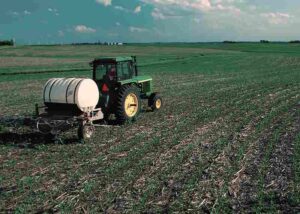
The decreased need for fertilizer in intercropping systems also contributes to a reduction in the use of synthetic chemicals in agriculture. This aligns with principles of sustainable agriculture and eco-friendly farming practices.
Asides fertilizers, other chemicals may become less-needed on farms when intercropping is implemented. This is because intercropping can enhance plant resistance to herbivorous pests. Different crop combinations can confuse or deter pests, thereby reducing the reliance on chemical pest control methods that may be harmful to the environment.
Studies indicate that intercropping can reduce the requirement for synthetic fertilizer nitrogen (N) on a global scale (by enhancing soil microbial-nitrogen cycling processes), further emphasizing its importance in sustainable and efficient agricultural practices.
Intercropping can lead to a more efficient use of available land. By achieving higher yields with lower fertilizer input, it maximizes land use efficiency and contributes to greater food production.
Additional Notes and Reiterations
The advantages of reduced fertilizer demand in intercropping are evident in studies that show increased yield per unit area, reduced fertilizer usage when counted per unit product, more efficient resource utilization, and greater resistance to herbivorous pests.
This results in cost savings for farmers, environmental benefits, and higher land use efficiency in agriculture.
8). Compatibility With Other Sustainable Practices
Intercropping, in many cases, is highly compatible with other sustainable agricultural practices; making it a versatile and beneficial method of farming. This section discusses its compatibility with other sustainable practices.
The Implementation of Intercropping Within A Combined Sustainable Farming Context
Intercropping can be combined with other practices and elements of sustainable farming like crop rotation, mulching, composting, and agroforestry.
Crop rotation is a well-established sustainable farming practice that helps to break pest and disease cycles, maintain soil fertility, and control soil erosion. Intercropping can complement crop rotation by enabling farmers to cultivate and harvest multiple crops within a single year, thereby effectively integrating the benefits of both practices. The diversity of crops in intercropping systems can further enhance the effectiveness of crop rotation.
Mulching is another sustainable practice that is used to control weeds, conserve soil moisture, and improve the quality of soil. Intercropping can be effectively combined with mulching techniques to form a holistic agricultural-approach to weed management and soil conservation. For instance, intercropping with mulch can help in retaining soil moisture and reducing weed pressure.
Sustainable farming practices often aim to minimize the use of synthetic chemicals. Intercropping can be part of an integrated pest management strategy that reduces the reliance on chemical pesticides and herbicides for crop protection. The diverse crops cultivated in an intercropped system can naturally deter pests and diseases, reducing the need for chemical interventions.
Generally, sustainable agriculture places a strong emphasis on maintaining soil health. Intercropping contributes to this goal by promoting nutrient cycling, reducing nutrient depletion, as well as preventing soil degradation. The compatibility of intercropping with sustainable soil management practices ensures that the land remains productive over the long term.
Intercropping aligns with resource-efficient agriculture. By optimizing resource utilization and land productivity, it complements other sustainable practices which are focused on achieving high yields with minimal resource inputs. This efficiency is beneficial for both the environment and the economic sustainability of agriculture.
Combining intercropping with other sustainable practices enhances the diversity of food production. This can be vital in boosting food security, as different crops can be grown together, thereby reducing the risk associated with crop failures.
Compatibility of intercropping with other sustainable practices is at the core of agroecological farming systems. It enables farmers to create diverse and resilient ecosystems that mimic natural processes. This, in turn, fosters sustainability in agriculture.
Conclusion
Advantages of intercropping are;
1. Increased Crop Yield
2. Organic Pest Control
3. Soil Conservation and Optimization
4. Space Efficiency
5. Reduced Disease Incidence
6. Lower Water Requirement
7. Reduced Fertilizer Demand
8. Compatibility With Other Sustainable Practices
